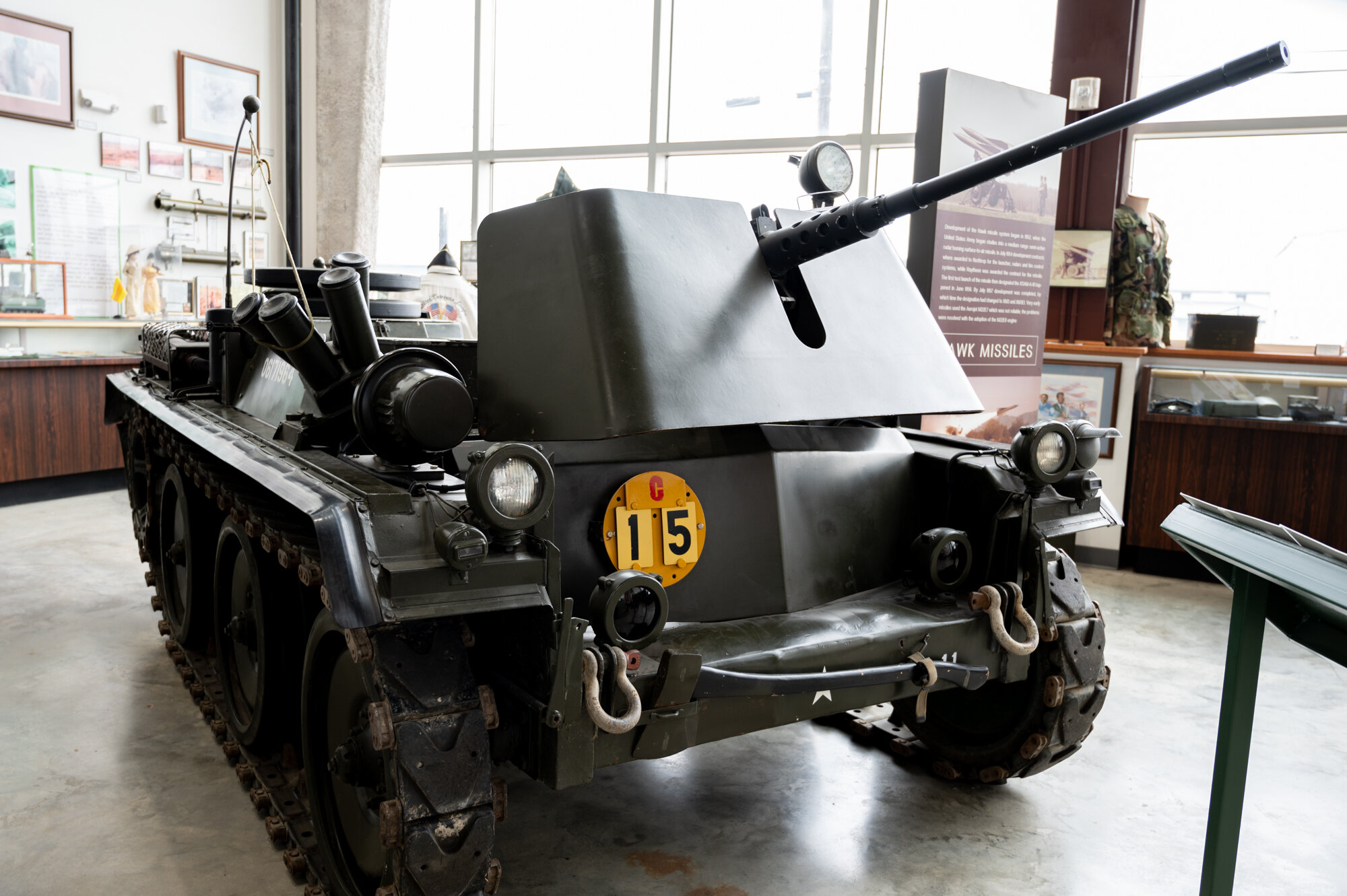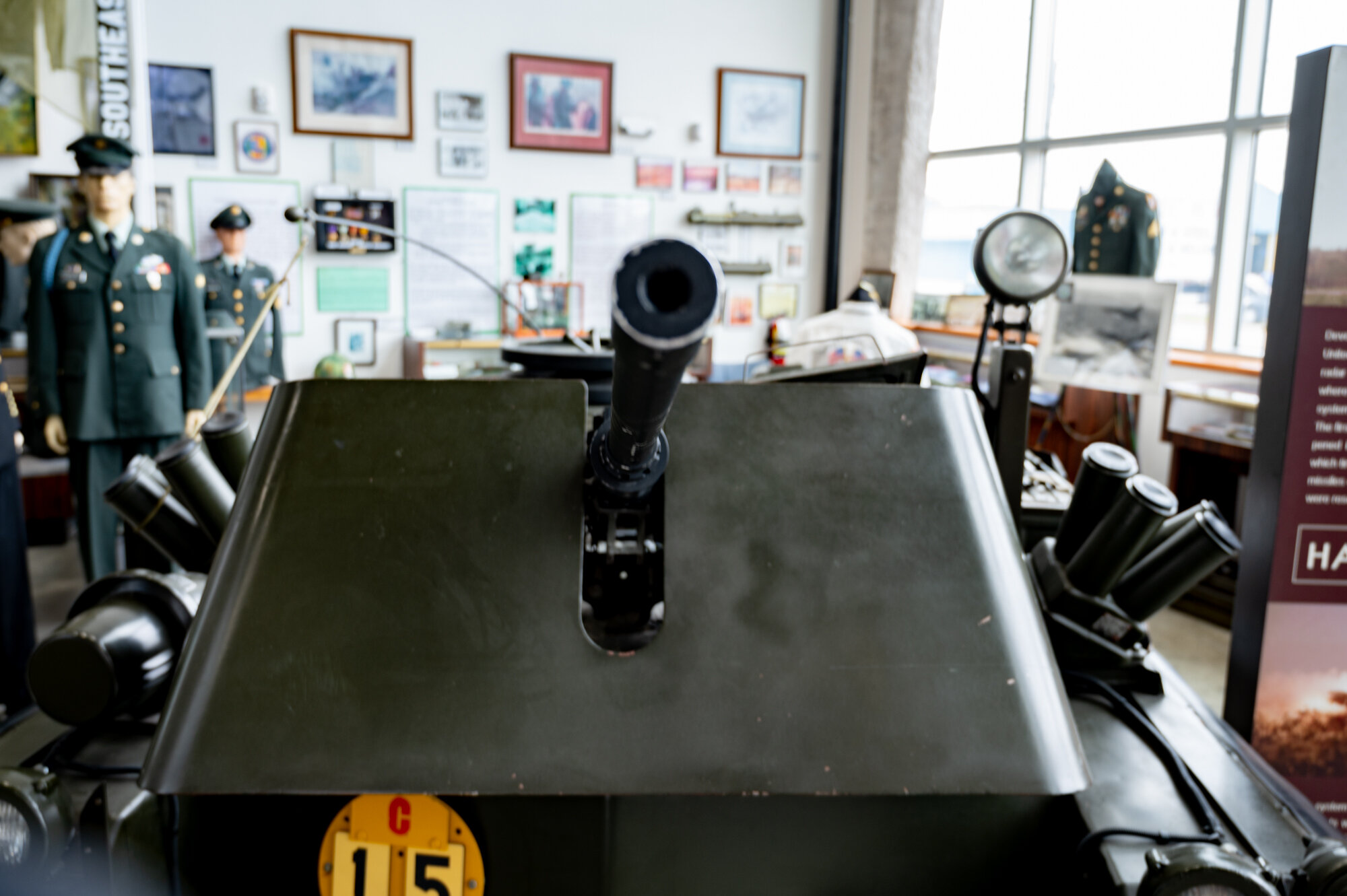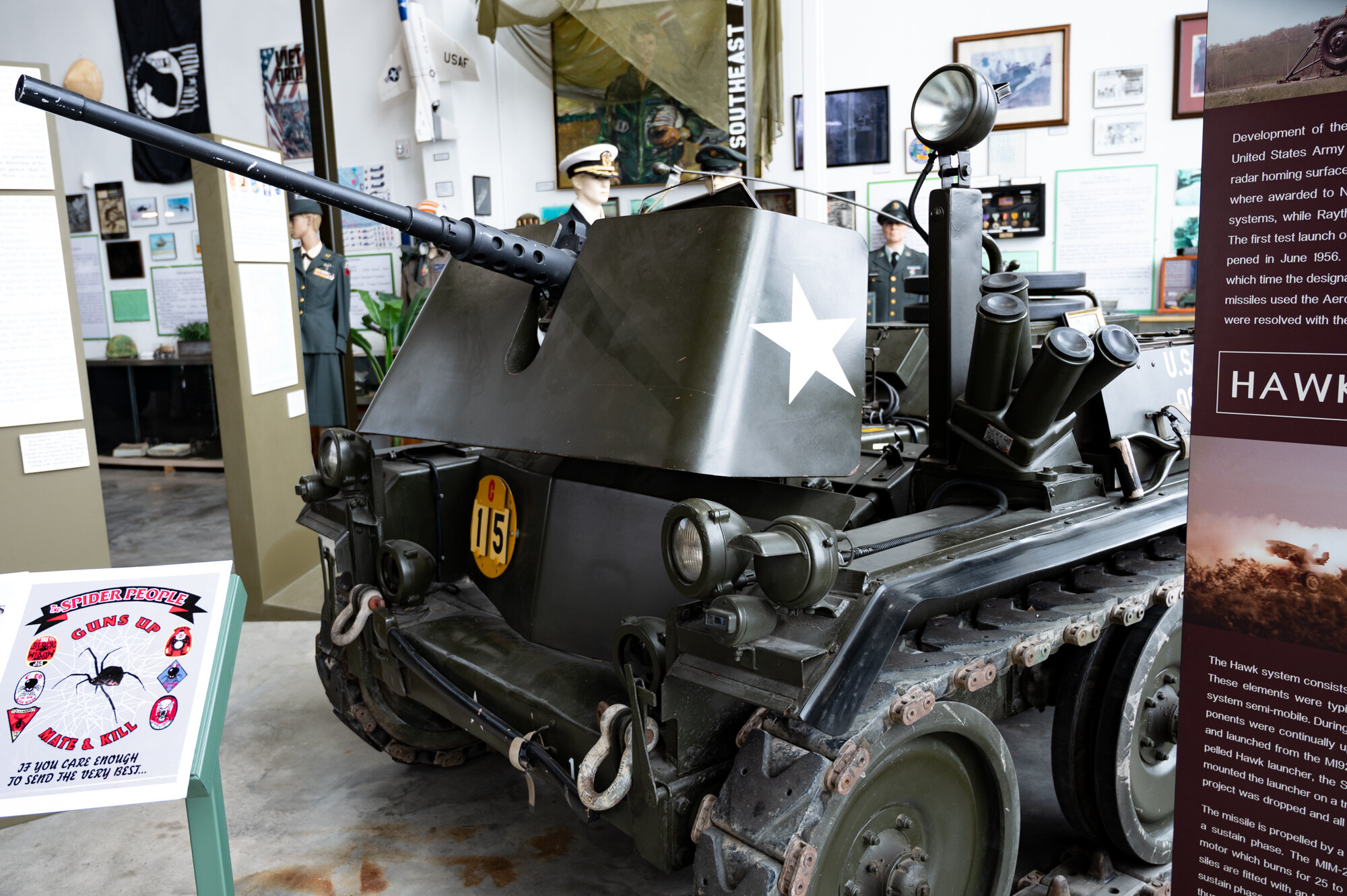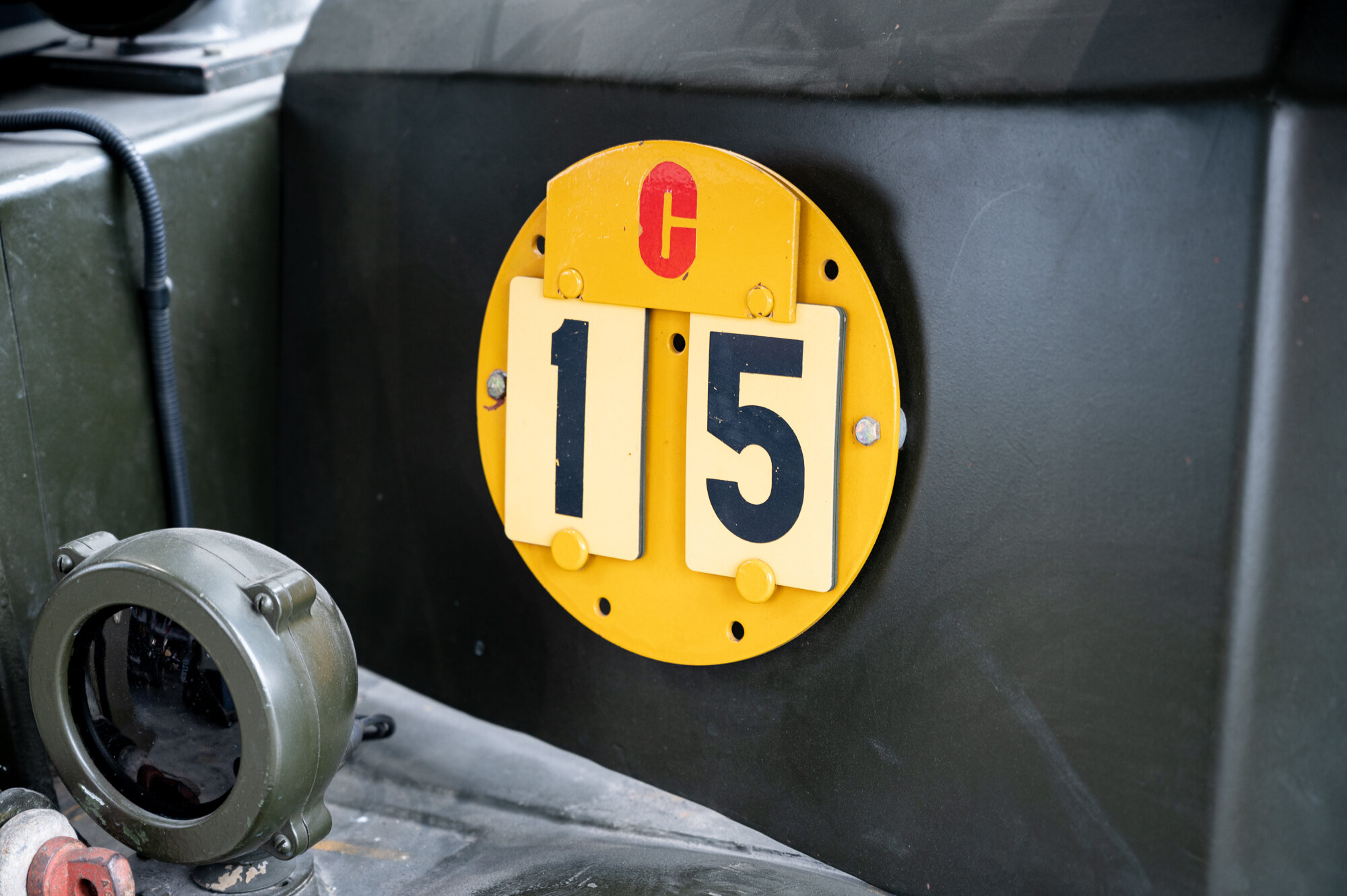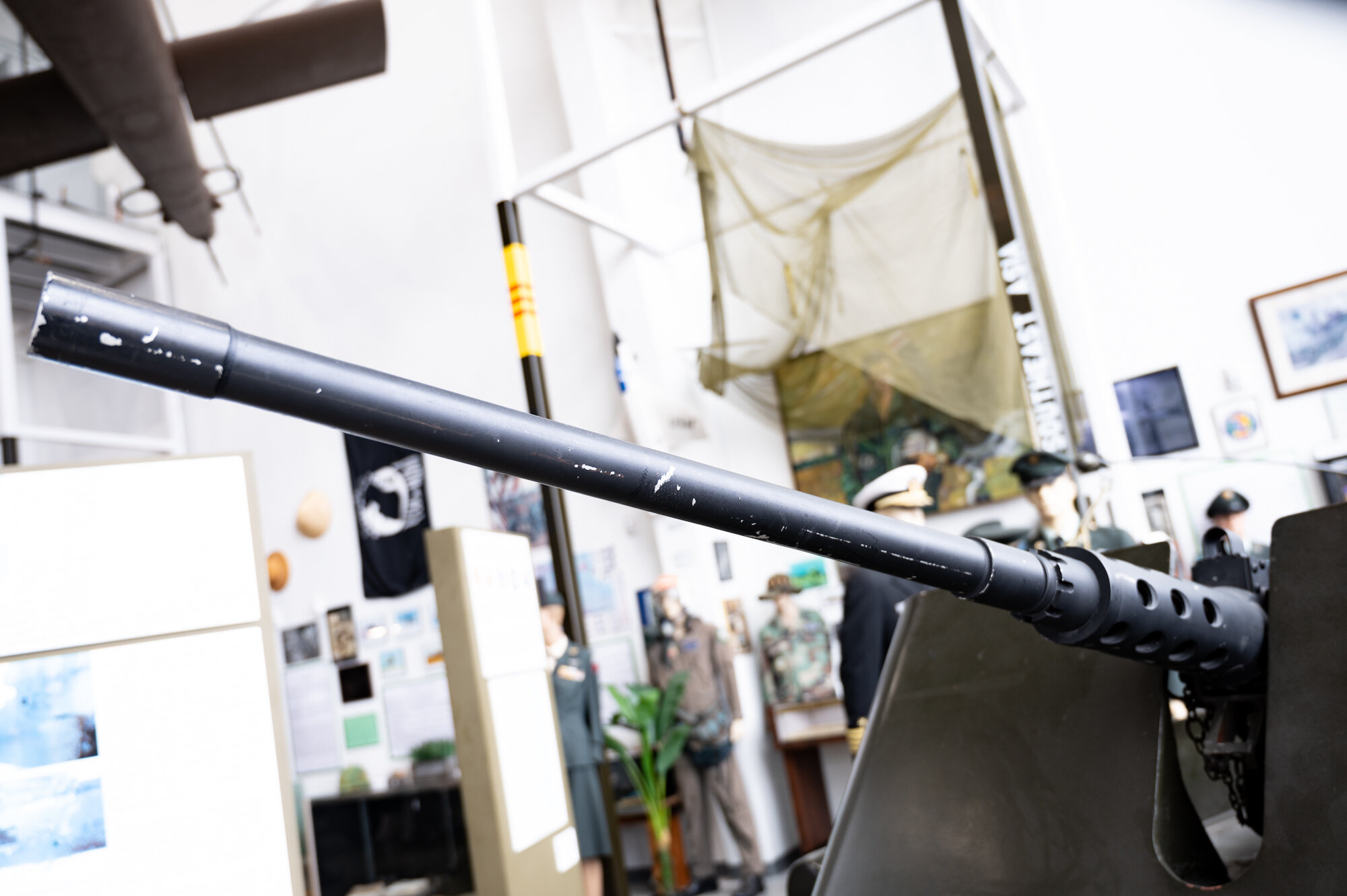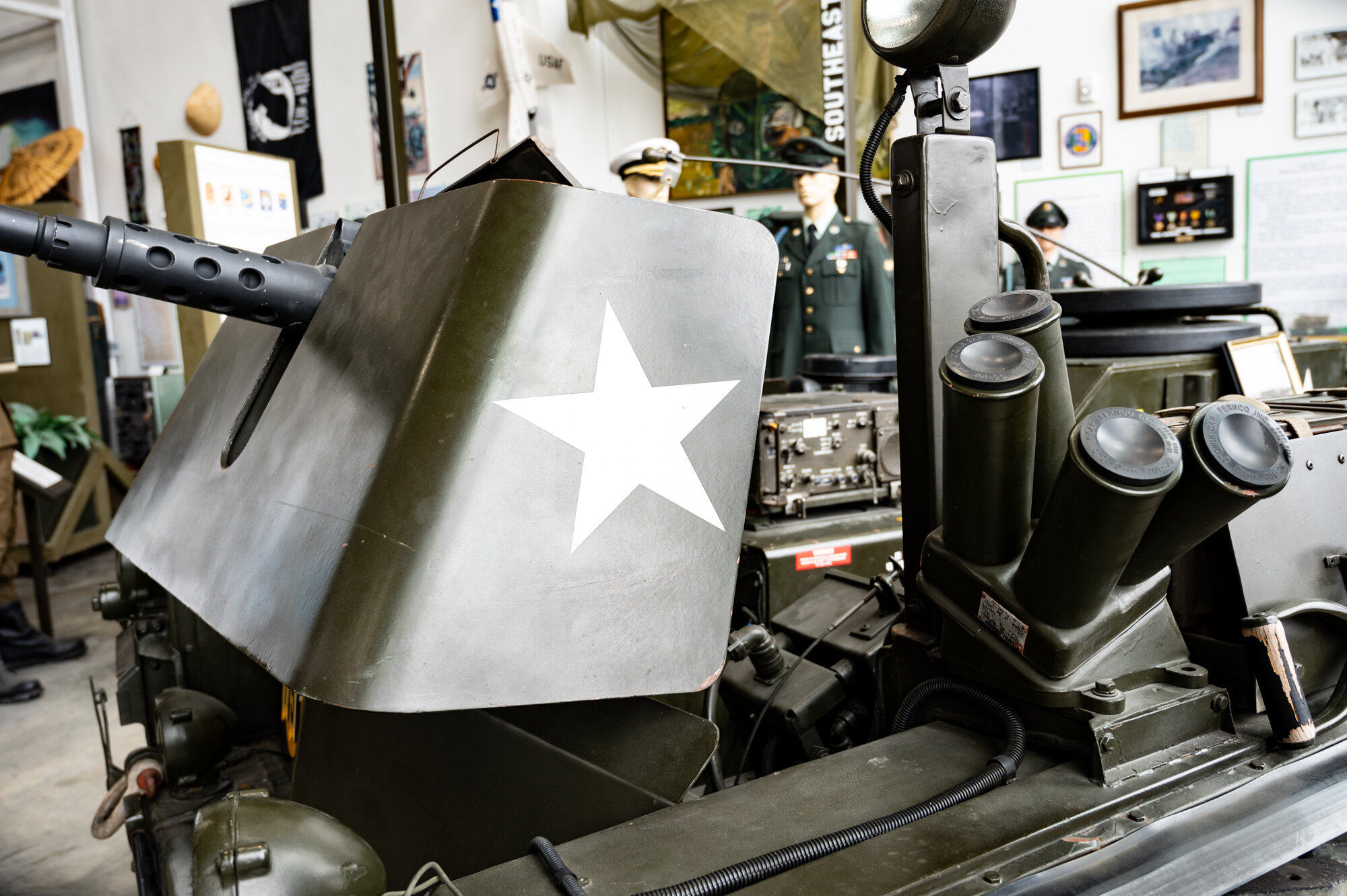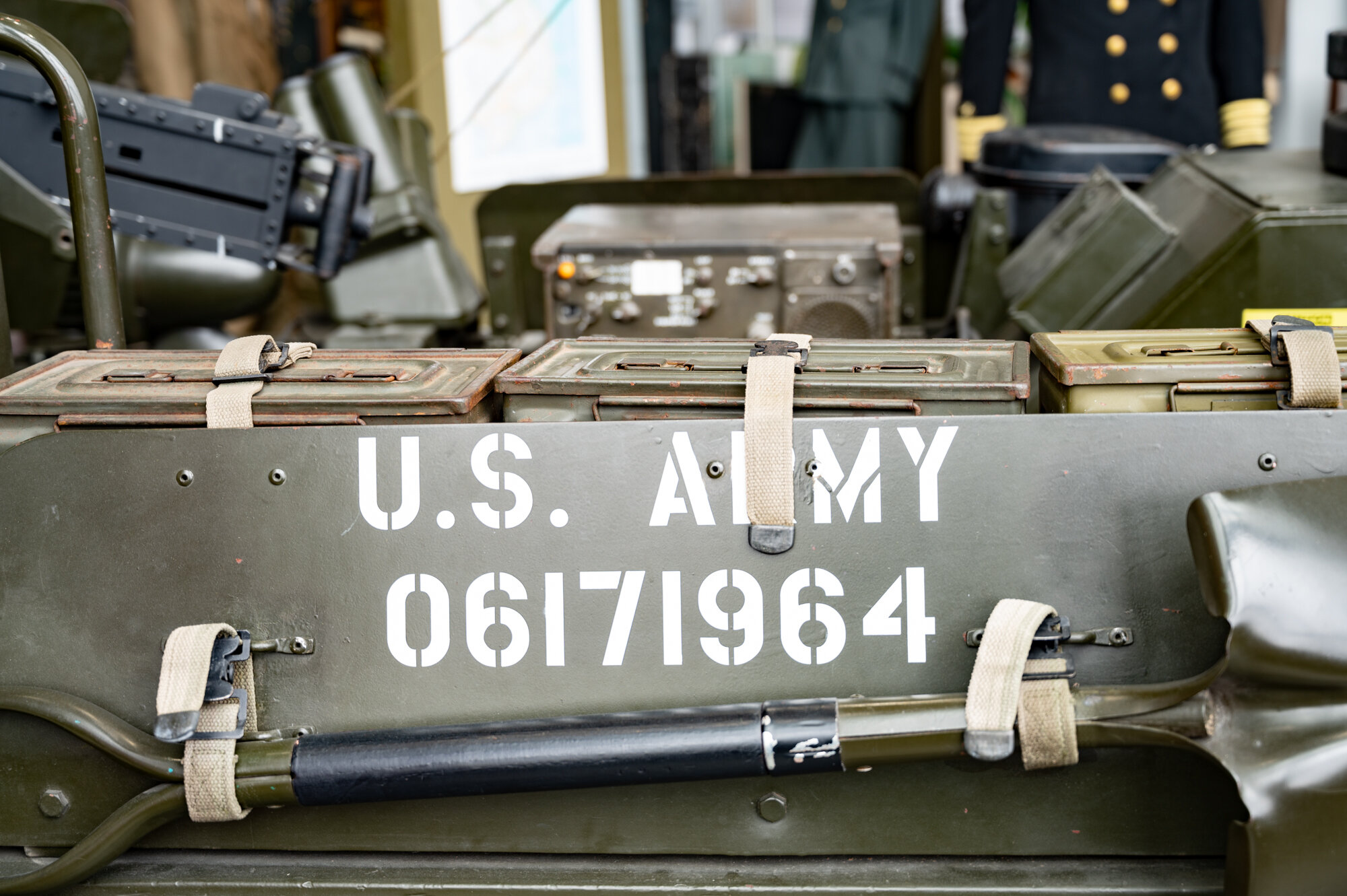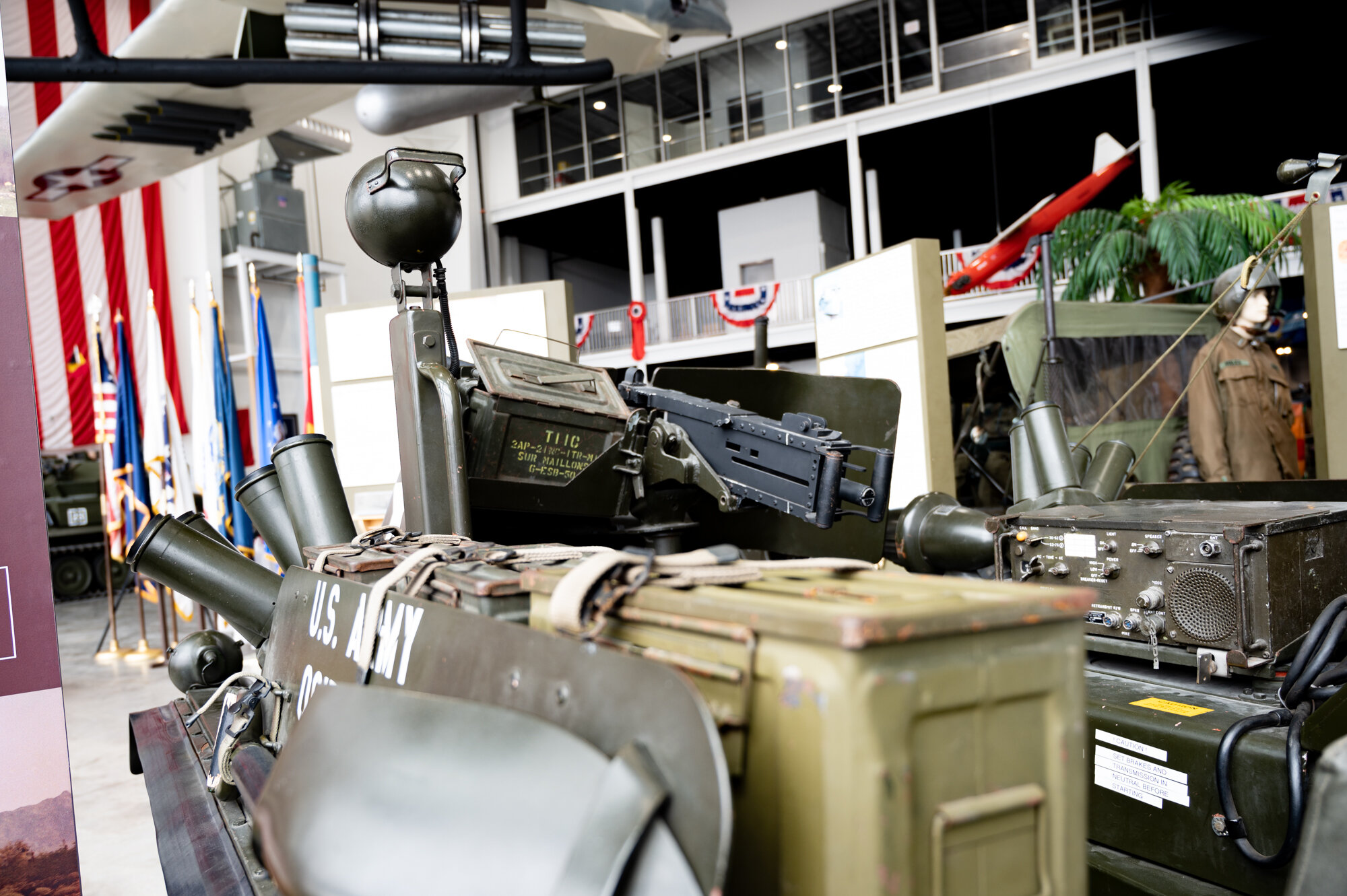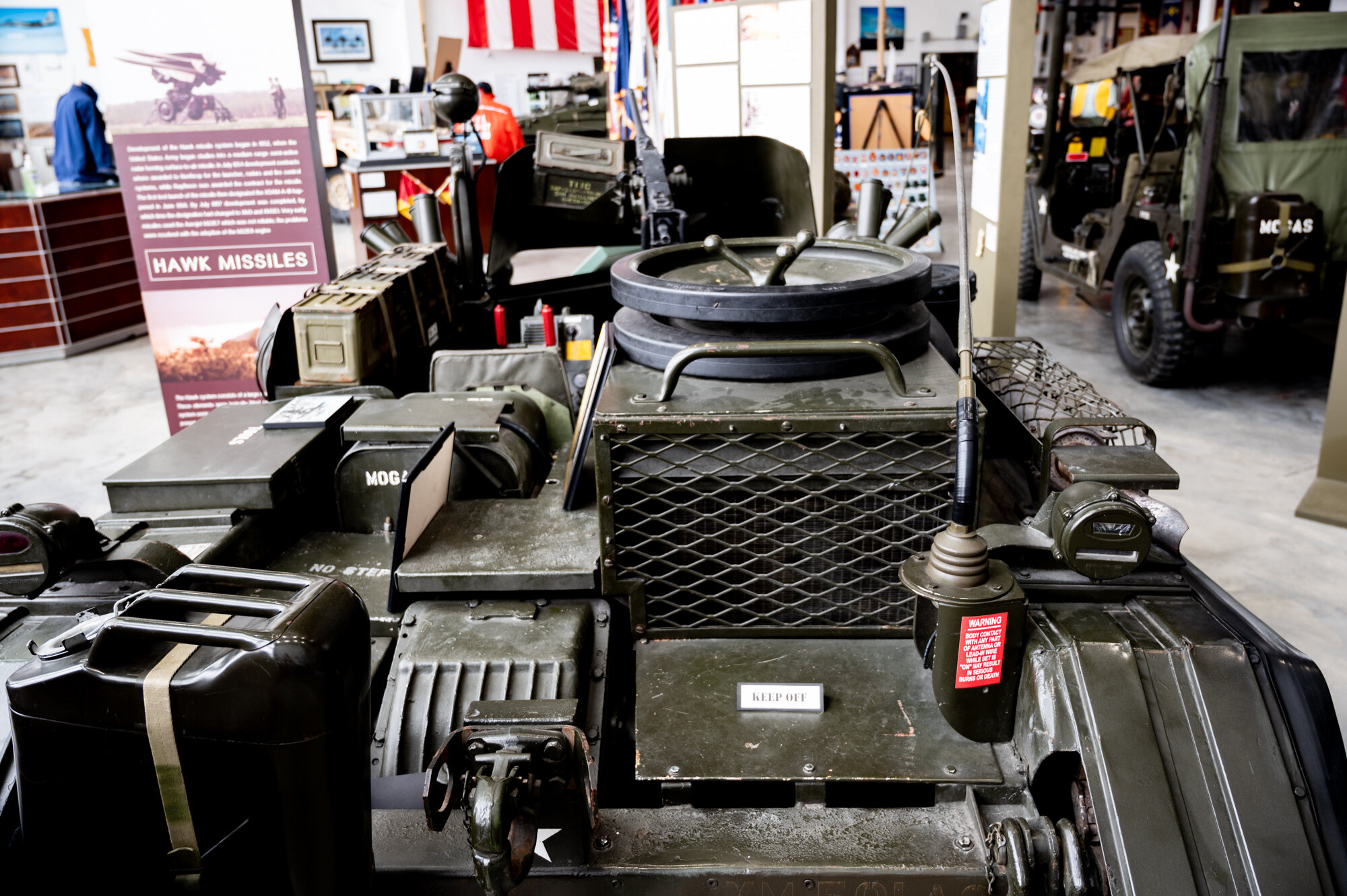HAWK Missile Launcher
/When the United States sought an option for a medium range, semi-active surface-to-air missile during the early 1950s, what resulted was the HAWK missile system, targeted toward low-flying aircraft.
The Regional Military Museum in Houma is proud to display an exhibit showcasing the HAWK missile system, including a tractor used to load the launch trailer that would ultimately fire the missiles in combat.
HAWK missiles were fired using a mobile M192 triple-missile launcher, which was powered by a dual thrust motor and housed on trailers with wheels.
The U.S. Army began developing the HAWK system in 1952. Two years later, defense technology company Northrop was tasked with developing the missile launcher, radar, and control systems, while Raytheon Technologies would create the missiles themselves. The first system was completed by 1956 and tested under the name XSAM-A-18.
The following year, the system was ready for use.
However, the HAWK missile launcher would see a series of revisions and continuous optimization during its lifetime. For a start, the M22E7 engine used with the first set of missiles proved problematic, resulting in a switch to an M22E8 engine.
The 1970s saw another in-depth redevelopment of the HAWK system, and it underwent its Phase III transformation in the 1990s.
By the 1960s, the HAWK launcher became a primary method of defense for the U.S. Marine Corps.
Today, the launcher is still used by dozens of military forces around the world.
The loading tractor featured at the Regional Military Museum is an M501 model, which was used to load triple missiles onto an M192 launch trailer to fire in combat.
The donor of the M501 trailer added several replica elements to the model, including a machine gun, armor plate, radios, sirens, and more.
Visit the Regional Military Museum today to learn about the HAWK missile launcher.
Additional Sources
http://ae.sharif.edu/~rocket_design/ssm/mim-23/HAWK%20TMD.htm

